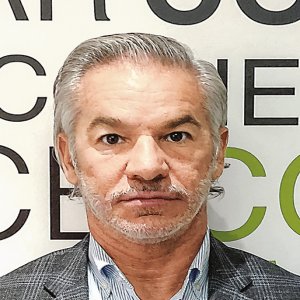Local Strategy Minimizes Crisis Effect

STORY INLINE POST
Mexico’s fragmented real estate market has made it a competitive destination for the luxury and second-home segments, according to Carlos González, Chairman and CEO of Sotheby’s International Realty Mexico. “The fragmented nature of the real-estate business makes competition feasible,” he says. “Companies do not have to compete against a leader that monopolizes the industry.”
Sotheby’s International Realty Mexico is a real estate franchise of Sotheby’s International Realty, founded in 1976 by auction house Sotheby’s and now a subsidiary of real estate franchising company Realogy Holdings Corp. “Around 20 years ago, Mexico presented a significant business opportunity in the market for second homes,” says González. “Many foreigners were buying real estate in Latin American tourism centers, including Mexico and Costa Rica.” González saw an opportunity to take advantage of the market’s conditions to target a niche among top-tier properties that were not necessarily associated with a high price tag but with a high value proposition. Although Mexico competes directly with countries in the Caribbean and Central America, its privileged position in terms of geographic location and climate led González to acquire the first Sotheby’s International Realty franchise for eight states: Baja California, Baja California Sur, Yucatan, Campeche, Quintana Roo, Colima, Jalisco and Nayarit.
The company’s first focus was on the second-home market for nonresidents but the bankruptcy of Lehman Brothers forced Sotheby’s International Realty to change its approach. It had already identified three important market niches: emotional buyers, house flippers and stable buyers. However, the deteriorated state of the industry for second homes after 2008 erased the opportunity among emotional buyers and flippers. “Two thirds of our business disappeared and our influx of stable buyers was reduced by 50 percent,” says González. “Overall, the second-home market experienced an 80 percent decrease in volume sales during the years of the crisis, fueled also by the swine flu outbreak in 2009 and the government’s strategy to combat organized crime.”
To remain profitable, Sotheby’s International Realty Mexico strengthened its offering for locals and extended its franchise reach to cover the entire country. “The second-homes business remains an important part of our strategy but the local market is very large and quickly catching up,” González says. “We will soon have a 50-50 ratio between both segments.”
Sotheby’s International Realty Mexico is in a growing phase and even though the change in the federal administration created uncertainty in the business community in the second half of 2018 and in early 2019, González is convinced that more business opportunities will emerge. “Our offering has enjoyed a good reception in Mexico City. We are a known brand and developers trust us,” he says. Furthermore, Sotheby’s International Realty Mexico is among the few international brands with a permit for project marketing and a portfolio of flagship projects that include Chapultepec Uno. The market has also recovered from the Lehman Brothers’ crises, thus opening a bigger market for Sotheby’s International Realty in Mexico. However, factors such as interest rates and a volatile peso-dollar exchange rate remain obstacles for the real estate industry. “The assets we commercialize require access to longterm financing. Without it, the industry would practically be non-existent,” says González.
Lack of financing for nonresidents, in particular, has taken a toll on Sotheby’s International Realty Mexico’s business opportunity. According to González, US banks have no problem offering credit to their clients but fail to understand a property’s appraisal and guarantee prices. Meanwhile, Mexican banks understand the property but not the client’s payment capabilities. “Lack of cross-border funding represents a structural problem but at the same time an important business opportunity,” he says. “Private funds can easily fill this gap.”























